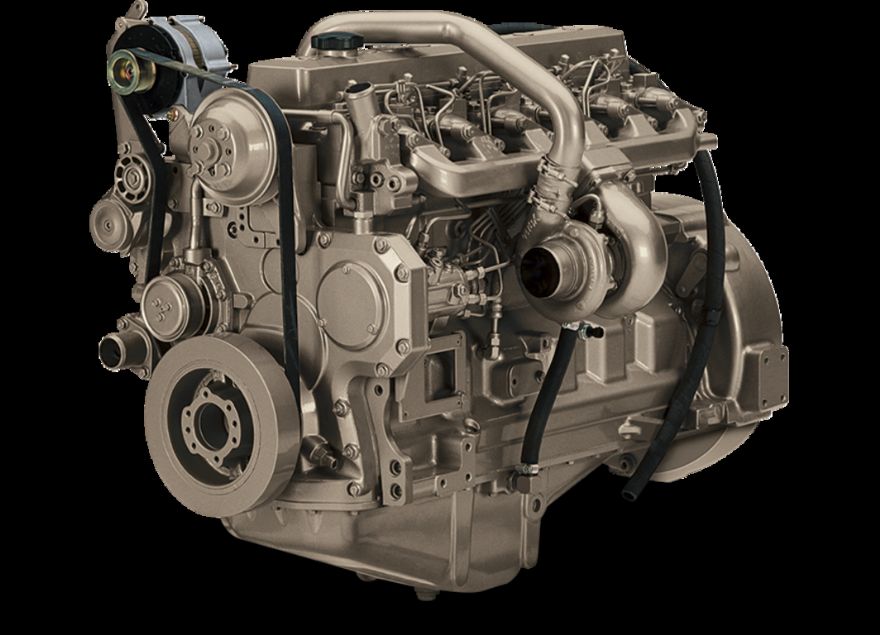
Since the invention of
the first diesel engine by Frenchman Rodulf Diesel in 1892, the technology has had a huge part to play in various industries around the world becoming the engines of choice for nearly all heavy machinery including trucks, ships, submarines and trains.
Diesel engines are basically internal combustion units where fuel is mixed with air as it enters the engine and the mixture is compressed internally inside the engine’s cylinder, generating power to propel the machine.
A four-stroke engine cycles through four stages during which the piston moves up and down twice to produce power. The stages include:
Intake stage — air is drawn into the cylinder through an inlet valve causing the piston to move downwards
Compression stage — the air inlet valve shuts and the piston moves up to compress the air while heating itAt the same time, diesel is drawn into the engine through the central fuel injection valve
Powering stage — the compressed mixture combusts and pushes the piston down and ignites the crankshaft, which then powers the wheels
Exhaust stage — the outlet valve at the top of the engine opens to release exhaust gases, which are pushed out by the returning piston
Meanwhile, two-stroke diesel engines are smaller, lighter, and tend to be more efficient as compared to the four-stroke engines since they produce power once during each rotation, unlike the four-stroke which produce power once every two rotations. Due to the high-power generation, they require more cooling and lubrication, as wear and tear are higher.
The two-stroke engines, the complete cycle happens in three stages:
Exhaust and intake stage — fresh air is drawn into the side of the cylinder and old exhaust air pushed out through valves at the top of the engine
Compression Stage — The inlet and exhaust valves shut and the piston moves upward to compresses the air and heat it. When the piston reaches the top of the cylinder, fuel is injected to ensure spontaneous ignition
Powering stage — the combusted air-fuel mixture ignites pushing the piston down and driving the crankshaft, which then sends power to the wheels
Top Reasons why Heavy Machinery Use Diesel Engines
Efficiency — Heavy machinery need higher temperatures and power for ignition. In these machines, the slow combustion of diesel makes it efficient as the fuel burns even at moderate temperatures. According to the Carnot’s theory, the efficiency of an engine depends on the high and low temperatures between which it operates.
Pollution — Despite diesel engines having the major drawback of producing unburned soot particles, it is known to the reduction in emission of CO
2 into the atmosphere.
The British Society of Motor Manufacturers and Traders estimated diesel-powered machines to save about 3 million tonnes of carbon from being released into the atmosphere a report that has increased the purchase of both new and
used diesel engines by consumers who are conscious of their carbon footprint.
Power output — The output of an engine is measured through horsepower and the twisting force of the driveline (torque). Heavy vehicles and machinery need a considerable amount of torque to run even at the slowest speed. Remember that petrol burns faster than diesel, which means that diesel engines will achieve a higher torque in heavy machinery. Big amounts of torque is what gets things moving and the reason why heavy machinery use diesel-powered engines. Needless to say, petrol generates lower rev/min hence not a practical option for machines that need high torque power.
Great compression ratio — One of the key elements that automakers consider when fitting engines is the extreme compression ratio and levels of vibration. Since weight and vibration are no big issues for heavy machinery, they are fitted with diesel engines to help spread the vibrations or dampen them entirely. In addition, modern diesel engines lower the noise, vibration, and harness the efficiency of a machine.
Reliability — Diesel engines are built tough to endure compression ignition. Since these engines come from a workhorse heritage, they are reliable and require relatively little maintenance. In older technologies, this translated to diesel engines being heavier than gasoline gas engines. With modern manufacturing methods, the weight aspects has been greatly reduced in diesel engines.